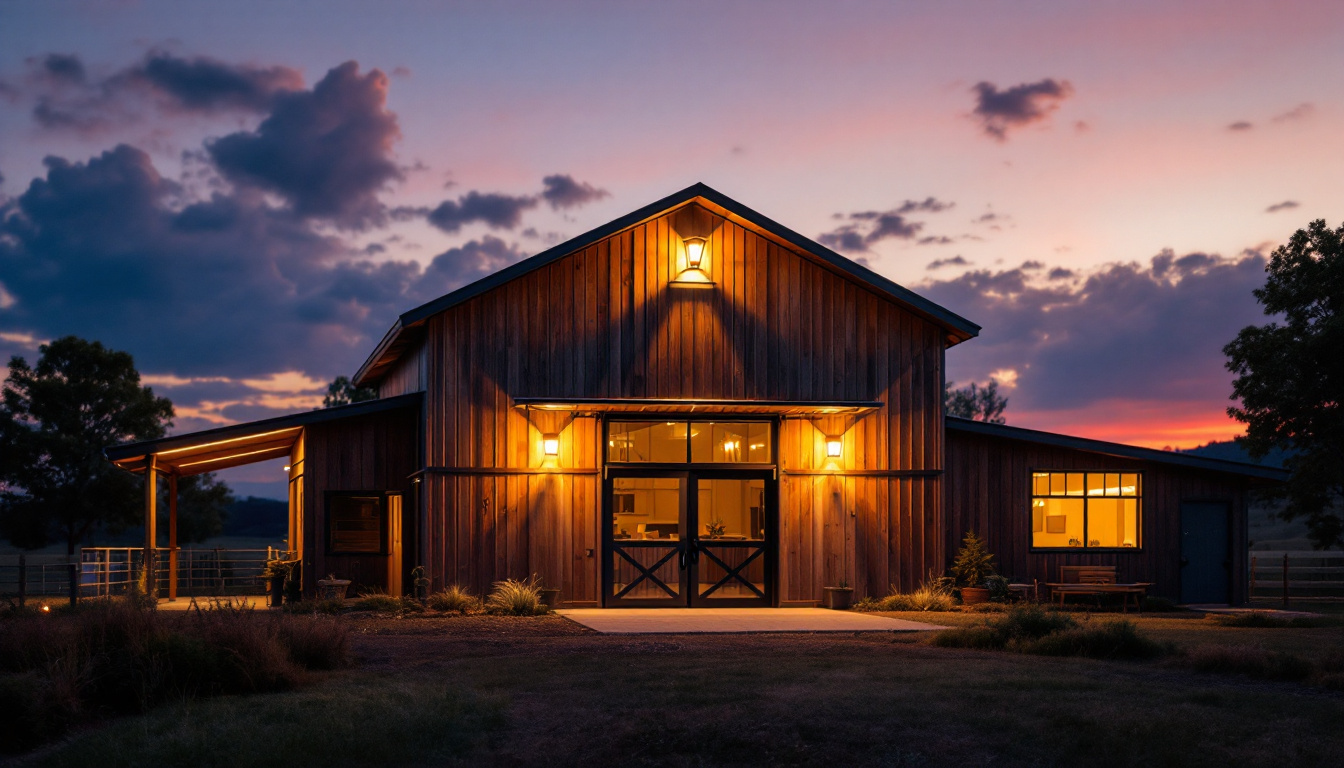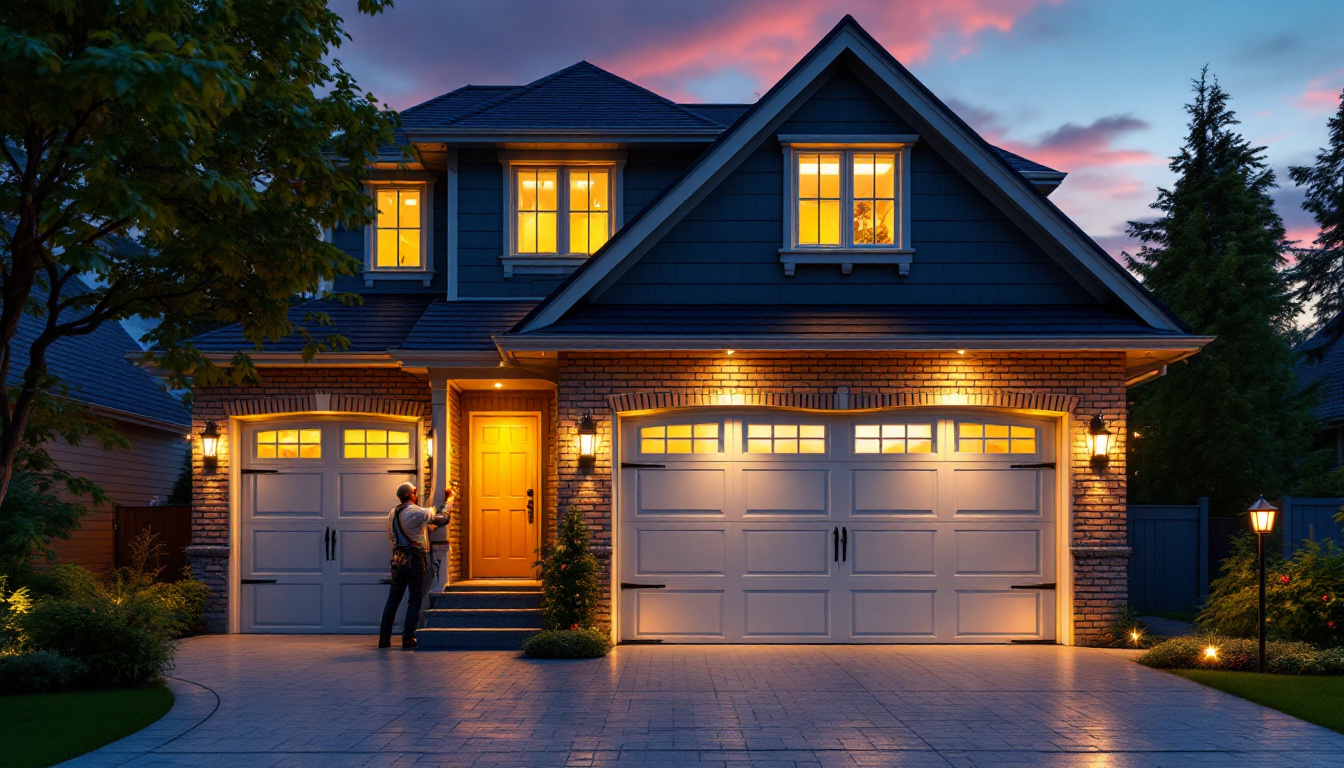
The lighting industry has undergone a remarkable transformation over the years, with innovations paving the way for more efficient and sustainable solutions. Among these advancements, barn LED lights have emerged as a game-changer, particularly for agricultural and industrial applications. This article delves into the evolution of barn lighting, focusing on the transition from traditional lighting solutions to modern LED technology, and the benefits that come with this shift.
Understanding the evolution of barn lighting requires a look back at its historical context. Traditionally, barns relied on incandescent and fluorescent lights, which, while effective, had significant drawbacks. Incandescent bulbs, for instance, produced a warm glow but were energy-inefficient and had a short lifespan. Fluorescent lights, on the other hand, offered better energy efficiency but often flickered and had a tendency to dim over time.
In the early days, barns were illuminated using simple methods such as oil lamps and candles. These sources provided minimal light and posed safety risks due to their open flames. As technology advanced, electric lighting became more common, leading to the widespread use of incandescent bulbs. However, the limitations of these bulbs soon became apparent, prompting the search for better alternatives.
Fluorescent lighting emerged as a popular choice for barns in the mid-20th century. These lights offered improved energy efficiency and longer lifespans compared to incandescent bulbs. They were particularly favored in agricultural settings, where consistent and bright lighting was essential for tasks such as milking and feeding livestock. However, despite their advantages, fluorescent lights still had drawbacks, including the need for warm-up time and sensitivity to temperature fluctuations.
As the 21st century approached, the agricultural industry began to embrace newer technologies, leading to the introduction of LED lighting in barns. LEDs are not only more energy-efficient than their predecessors but also provide a longer lifespan, often lasting up to 25 times longer than incandescent bulbs. This shift has allowed farmers to reduce their energy costs significantly while also enhancing the quality of light for both workers and animals. Additionally, LEDs can be designed to emit specific wavelengths that can positively influence animal behavior and productivity, making them a game-changer in barn lighting.
Today, the focus on sustainability has further transformed barn lighting practices. Many farmers are now integrating smart lighting systems that can be controlled remotely, allowing for optimal light management based on the time of day or specific tasks. These systems can also be paired with solar panels, harnessing renewable energy to power barn lighting, thereby minimizing the carbon footprint of agricultural operations. The integration of technology not only improves efficiency but also aligns with the growing demand for environmentally friendly farming practices, showcasing how far barn lighting has come since the days of simple oil lamps and candles.
As the demand for energy-efficient lighting solutions grew, LED technology began to gain traction. LEDs, or light-emitting diodes, represent a significant leap forward in lighting efficiency and performance. Unlike traditional bulbs, LEDs convert a higher percentage of energy into light, resulting in lower energy consumption and reduced operating costs.
LEDs operate on a fundamentally different principle than incandescent or fluorescent lights. They emit light through a process called electroluminescence, where electric current passes through a semiconductor material, producing light. This technology allows for greater control over color temperature and brightness, making LEDs versatile for various applications.
The transition to LED barn lights offers numerous advantages that make them an attractive option for lighting contractors and farmers alike. First and foremost, energy efficiency is a significant benefit. LEDs consume significantly less power than traditional lighting, leading to substantial savings on electricity bills. Additionally, their long lifespan—often exceeding 25,000 hours—means reduced maintenance costs and fewer replacements.
Moreover, LED lights provide better illumination quality. They can produce bright, uniform light that enhances visibility in barns, improving safety and productivity. Furthermore, many LED barn lights are designed to be resistant to harsh environmental conditions, ensuring longevity even in challenging settings.
As the technology behind LED lighting has advanced, so too have the designs of barn LED lights. Modern designs not only focus on functionality but also on aesthetics and adaptability. This evolution has led to a variety of options tailored to meet the specific needs of agricultural environments.
Today, there are several types of LED barn lights available, each designed for specific applications. For instance, high bay LED lights are ideal for illuminating large open spaces, such as barns with high ceilings. These lights provide powerful illumination and are often equipped with advanced optics to ensure even light distribution.
Wall-mounted LED fixtures are another popular choice, particularly for areas where overhead lighting is impractical. These fixtures can be strategically placed to provide targeted lighting in work areas, enhancing visibility and safety.
In recent years, the integration of smart technology into barn lighting has gained momentum. Smart LED barn lights can be controlled remotely, allowing for adjustments in brightness and color temperature based on specific needs. This level of control not only enhances energy efficiency but also provides the flexibility to adapt lighting conditions for different tasks or times of day.
Additionally, smart lighting systems can be integrated with sensors that automatically adjust lighting based on occupancy or natural light levels. This feature further optimizes energy use and creates a more comfortable working environment for farm employees.
The shift to LED barn lighting is not just a matter of convenience and cost; it also plays a crucial role in promoting sustainability within the agricultural sector. As environmental concerns become increasingly pressing, the adoption of energy-efficient lighting solutions is a step towards reducing the carbon footprint of farming operations.
One of the most significant contributions of LED barn lights to sustainability is their ability to drastically reduce energy consumption. By consuming less power than traditional lighting, LEDs help lower greenhouse gas emissions associated with electricity generation. This reduction is particularly important in regions that rely heavily on fossil fuels for energy.
In addition to energy savings, the long lifespan of LED lights contributes to waste reduction. Traditional bulbs often require frequent replacements, leading to increased waste in landfills. In contrast, the durability of LEDs means fewer discarded lights, promoting a more sustainable approach to lighting.
While the benefits of barn LED lights are numerous, there are also challenges and considerations that lighting contractors must keep in mind. Transitioning from traditional lighting to LED technology requires careful planning and assessment of the specific needs of the barn environment.
One of the primary challenges associated with LED barn lights is the initial investment cost. Although LEDs offer long-term savings, the upfront costs can be higher than traditional lighting options. However, it is essential to consider the total cost of ownership, which includes energy savings and reduced maintenance expenses over time.
Another consideration is the compatibility of LED lights with existing electrical systems. In some cases, retrofitting older barns with LED technology may require additional modifications to the electrical infrastructure. Lighting contractors should conduct thorough assessments to ensure a smooth transition and optimal performance.
The future of barn lighting is undoubtedly bright, with ongoing advancements in LED technology and design. As the agricultural sector continues to evolve, the demand for efficient and sustainable lighting solutions will only grow. Innovations in smart technology, energy storage, and renewable energy integration will further enhance the capabilities of barn lighting systems.
As the world shifts towards renewable energy, the integration of LED barn lights with solar power systems is becoming increasingly feasible. Solar-powered LED lights can provide a sustainable lighting solution for barns located in remote areas or those seeking to reduce their reliance on grid electricity. This combination not only enhances energy independence but also contributes to a more sustainable agricultural practice.
Research and development in the field of lighting technology will continue to drive improvements in efficiency, performance, and functionality. As new materials and technologies emerge, lighting contractors can expect to see even more advanced LED solutions tailored for specific agricultural applications. The emphasis on sustainability and energy efficiency will remain a guiding principle in these innovations.
The evolution of barn lighting from traditional incandescent and fluorescent solutions to modern LED technology marks a significant milestone in the lighting industry. The benefits of LED barn lights—ranging from energy efficiency and long lifespan to improved illumination quality—make them an ideal choice for agricultural settings. As the industry continues to evolve, lighting contractors have the opportunity to lead the way in adopting innovative solutions that not only enhance productivity but also promote sustainability.
In embracing LED technology, the agricultural sector can look forward to a future where lighting is not only functional but also environmentally responsible. The journey of barn lighting is far from over, and the possibilities are endless as technology continues to advance, paving the way for a brighter, more sustainable future in agriculture.
As you embrace the future of agricultural lighting, LumenWholesale is here to ensure that your transition to LED technology is seamless and cost-effective. Our commitment to providing contractors with high-quality, specification-grade LED barn lights at unbeatable wholesale prices means you can enhance productivity and sustainability without sacrificing your bottom line. With our extensive selection of premium lighting products and the convenience of free shipping on bulk orders, you’re guaranteed to find the perfect lighting solutions for your projects. Take the next step towards a brighter, more sustainable future in agriculture with Wholesale Lighting at the Best Value from LumenWholesale.

Discover essential best practices for lighting contractors when it comes to appliance plugs.
Discover how LED retrofit kits are transforming the lighting industry and boosting profits for contractors.

Unlock the secrets of 2Ft fluorescent lights with our comprehensive guide tailored for lighting contractors.

Illuminate your expertise with our guide on exterior garage lighting.